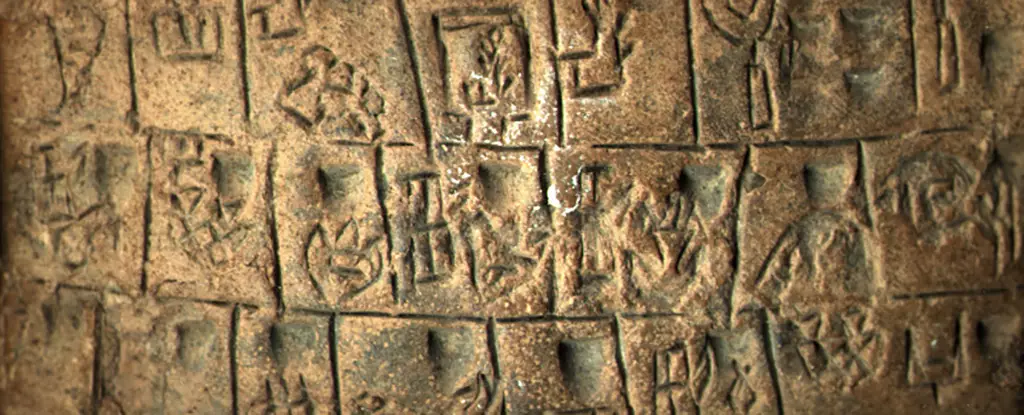Since antiquity, humans have sought to document their experiences and share knowledge. This innate impulse to communicate visually laid the groundwork for what eventually culminated in complex writing systems. Among the earliest instances of such visual communication can be found in the ancient civilization of Mesopotamia, where symbols on seals serve as a bridge between rudimentary symbolization and sophisticated writing. Recent research from the University of Bologna has shed light on this transition from primitive forms of visual expression to proto-cuneiform, an early writing system that set the stage for many subsequent developments in human communication.
Deciphering the Link between Symbols and Early Writing
The study conducted by a team of philologists, including Silvia Ferrara, investigates how the images found on ancient cylinder seals correlate with proto-cuneiform symbols. As researchers explored the imagery inscribed on these seals, they discovered notable connections between specific representations and proto-cuneiform signs that emerged before established writing practices were formalized. Ferrara emphasizes that while the interconnectedness of sealing practices and writing is generally acknowledged, the specificity of images linked to early writing has not been thoroughly examined until now.
The research team took meticulous care in comparing various designs found on cylinder seals dating back to a time when writing was still evolving. They focused on objects frequently depicted, such as textiles and vessels, identifying striking similarities between the visual representations and their corresponding proto-cuneiform symbols. This comparative approach is vital for understanding the transition to written language, as it places visual communication at the forefront of the development process.
Prior to the establishment of strict writing conventions, societies employed basic symbols to express fundamental concepts, facilitating a rudimentary form of communication, often referred to as proto-writing. This symbolic language served as a precursor to more complex writing systems, which required a combination of cognitive and artistic skills. Ferrara and her team argue that the designs engraved on these ancient seals helped standardize and refine this proto-writing.
Focusing on evidence from artifacts such as cylinder seals from Mesopotamia, the researchers noted that certain symbols, like the representation of textiles, showcased common geometric forms. The depiction of woven materials, for example, could be traced back to triangular shapes featuring multiple downward lines—indicative of fabric. This meticulous representation demonstrates how early visual tools facilitated an understanding of commodities and their significance in trade and daily life.
The emergence of proto-cuneiform offers critical insights into human cognition during a pivotal period. Ferrara posits that the transition from mere representations to systematic writing reflects a profound cognitive leap. This transformation not only brought about a new method of communication but also marked a significant shift in the way societies organized information, culminating in the distinction between prehistory and history. Thus, the findings of the research enrich our understanding of how visual symbols evolved into one of the first recognizable writing systems, enhancing human interaction and record-keeping.
Implications of the Study
The implications of this study extend far beyond academic interest; they highlight the interconnectedness of visual art and written language. The assertion that cylinder seals acted as precursors for proto-cuneiform emphasizes their essential role in the development of administrative and trade practices in ancient Mesopotamia. The ability to document transactions paved the way for more complex societies, enabling the exchange of goods and information on an unprecedented scale.
The archaeological findings from the University of Bologna illustrate how the artistry of ancient seals was not merely decorative but functionally significant in the evolution of writing systems. Understanding these connections grants us a clearer view of humanity’s fascinating trajectory from inchoate communication to the sophisticated literate cultures we recognize today. Writing, as a cognitive technology, remains a fundamental milestone in human history, representing the advancements in our ability to convey complex ideas and foster connections across time and space.


Leave a Reply